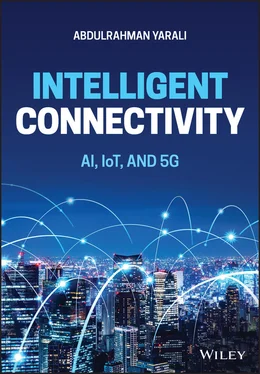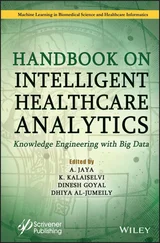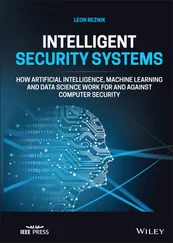In the last few years, global communications were achieved through satellite systems where connectivity was slow, expensive, and with limited bandwidth. Due to the demand for more capacity and faster networks, both terrestrial and undersea fiber cables were developed, making communication quicker and easier (Prysmian 2017). Even though microwave networks are still in use, manufacturers have modified them, and currently they can do higher capacities over longer distances. They can now meet customer's needs, which has enhanced communication in different sectors. The presence of 3G, 4G, and 5G networks means that businesses can adopt mobility where employees can work from any location as long they meet all the organization's requirements (Conan 2018). It is expected that in the next two decades, better networks and technologies will be developed and will enhance the performance of different business entities. It is essential to acknowledge that advanced technologies in networking are the current boost of business' future in the digital world. It is meant to offer connectivity that is destined to drive new services and products to transform all the necessary operating models.
Based on tomorrow's connectivity, digital transformation in businesses is achieved through data and networking technologies that are cognitive, with the adoption of IoT, blockchains, and advanced analytics to fuel and implement connectivity progress. Figure 1.2depicts the importance of AI, IoT, and 5G integration to accelerating technological development.
The connectivity of tomorrow will be enhanced by the presence of emerging technological innovativeness such as 5G, deployment satellites orbiting at lower distances, meshed networks, an edge in computing, and the presence of ultra‐modern and broadband solutions (Tempels 2016). The connectivity of tomorrow will enhance network function virtualization and will help organizations manage and evolve their connectivity options. As tomorrow's connectivity continues to take shape, various advanced building blocks of connectivity must be considered. The first building block is 5G; in this case, the fifth generation of cellular technology is expected to change and redefine the new wireless interfaces for smartphones. It provides faster speeds, low latencies, and the ability to connect many smart devices in the network. This means that different protocols coexist and meet the user requirements seamlessly (Tredinnick 2017). It is a unifying and pervasive technology that brings together different networking capabilities needed to change information flow and density at a specific scale (Tempels 2016). Low earth orbit satellites are also expected to redefine the connectivity of tomorrow.

Figure 1.2 The critical role of fusion of IoT, 5G, and AI in different industry sectors (Durmus 2020).
These clustered satellites can provide high‐performance connectivity to earth instead of traditional geostationary satellites (Millicom 2017). They are expected to play a critical role in different businesses since they can provide infrastructure tools to organizations in remote areas such as mining and transportation. The establishment of network function virtualization is also expected to redefine tomorrow's connectivity in the business sector. In this case, the Network Virtualization Function (NVF) replaces various networking functions such as routing, switching, encryptions, and deployment of firewalls (Norton, Littmann, and Prabhu 2019). It is eliminating various options in networking, such as load balancing and virtualization of software. It is a technology that depends on the deployment of commodity services, which are scaled either horizontally or vertically depending on the current demand. It is expected that this technology will change all the dynamics in tomorrow's connectivity, especially in the business world. As technology continues to grow, tomorrow's connectivity is expected to change various dynamics in the next two decades, especially in the business environment. There is a growing demand where the end device should expedite real‐time computation and ensure low latency. There is also a need to ensure that all the connected devices can monitor and manage various organizations' different resources and services. Therefore, as technology continues to grow, it is expected that it will affect many businesses in the next two decades and manage their operations.
1.4.1 Intelligent Interfaces
In the current technological advancements, the intelligent interface enables communication between two or more entities. The system's intelligence aspect means that the interface can predict what the user wants to do; thus, the system can predict the actions of the mind (Yasar 2019). Due to their technological advances, intelligent interfaces can be helpful while undertaking specific tasks. The intelligence factor enables the system to use the information gathered appropriately. In today's world, individuals have embraced technology, and they interact with it through various intelligent services, and the trend is expected to get better in the future. The presence of intelligent services has enabled people to move from traditional keyboards to touchscreens, while others use voice commands and other upcoming technologies. Therefore, businesses are expected to experience extreme growth from technology advancements since user interfaces will enable people to undertake various procedures more simply. A change in the engagement patterns provides a seamless and natural interaction method (Arxiv 2019).
In the next two decades, the business tech will experience advancements in innovative voice capabilities, which will allow communication with multifunctional systems in natural and active conversations. Since intelligent interfaces are integrated with systems based on AI, they can reply to various non‐verbal commands (Yasar 2019). The current interfaces can combine some of the latest human‐centered design techniques with some leading telecommunication technologies. Some of these technologies include computer vision, conversational voices, and auditory analytics, and some also consider the use of virtual reality. It is expected that these interfaces will become too complex and inflexible, while some people argue that some of the interfaces may not change when people's needs change (Arxiv 2019). In some instances, the interfaces do not work with each other. In the business world, an interface is intelligent if it can adapt to different users' needs and learn different concepts and techniques. An interface is also intelligent if it can anticipate the user's needs and initiate and provide different user suggestions (Hazard and Singh 2016). It is also intelligent if it can explain various actions that it may undertake.
Business‐related intelligent interfaces have a specific architecture that determines their functionalities. They have a particular rule that governs their performance; they have frame descriptions and contain discrimination networks; they also contain sub‐Sumption hierarchies and an inference engine. Other essential entities of the architecture include associative memory, matching, and the presence of autonomous agents. Intelligent interfaces are built with a perspective of human–computer interaction; the interfaces aimed at promoting businesses are designed so that they are clearer and have increased efficiency. Information is presented effectively and they offer better support while undertaking various tasks and goals (Hazard and Singh 2016). In the next two decades, intelligent interfaces will undergo a considerable transformation, making business technology better and easier. The presence of these interfaces is to offer services to the buyer and then provide the buyer with another buying opportunity. It is designed to benefit them in various areas, such as tracking the customer's habits while offline, providing new products and solution sets, and creating real‐time context‐aware and automated feedback loops based on the customer's feedback (Yasar 2019). The technology aims to make business interaction better and increase the revenues of the organizations.
Читать дальше













